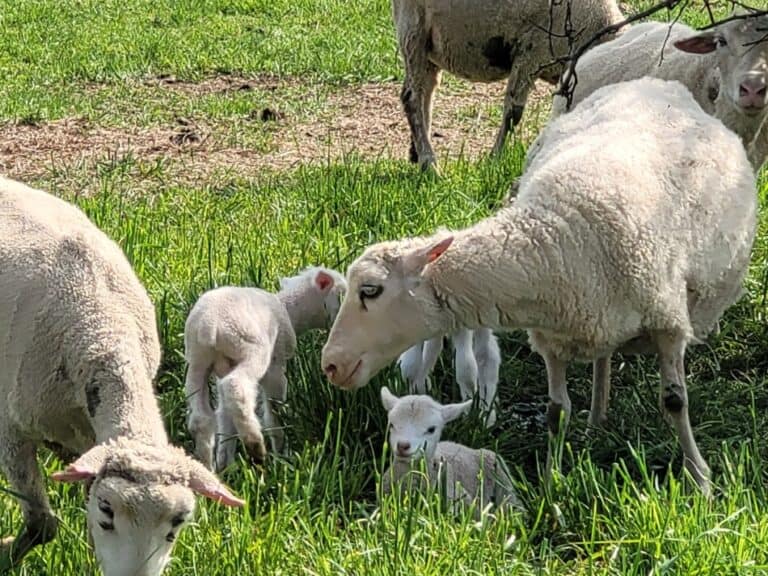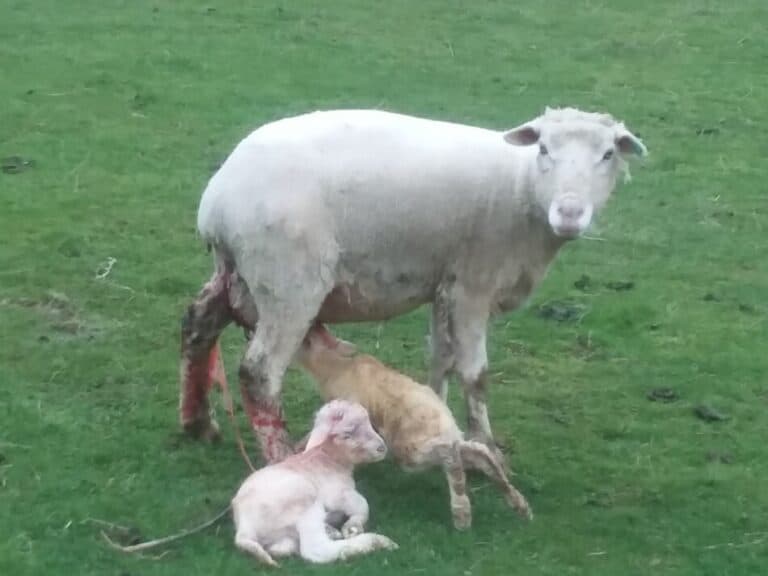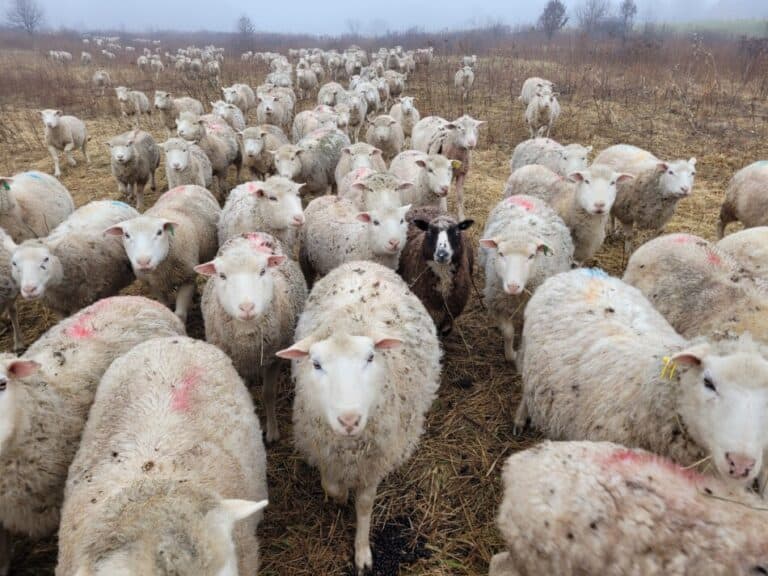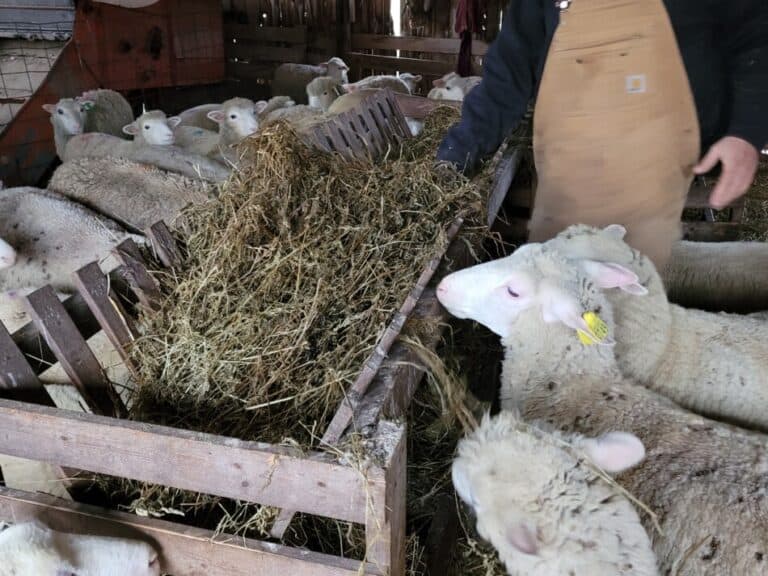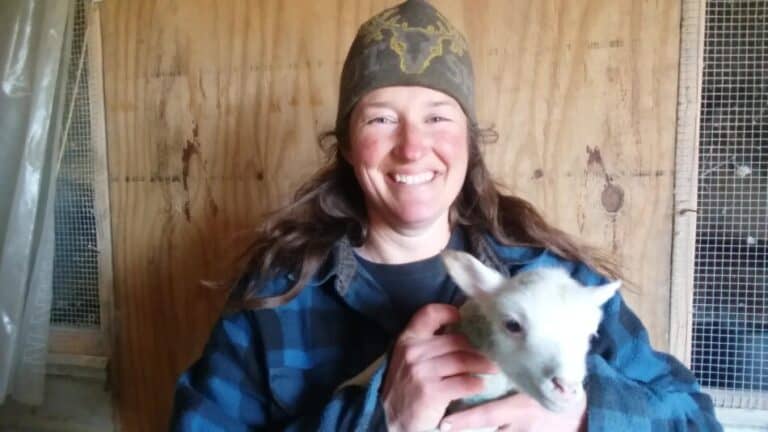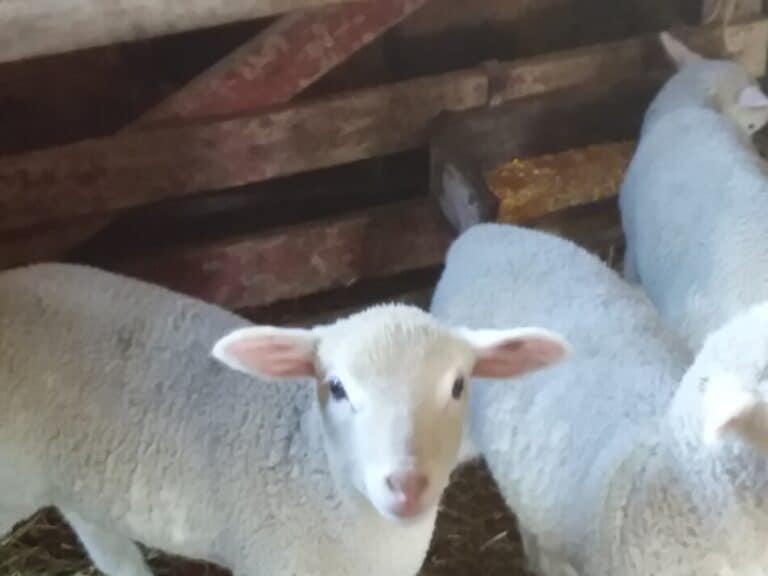Do Sheep Have Horns?
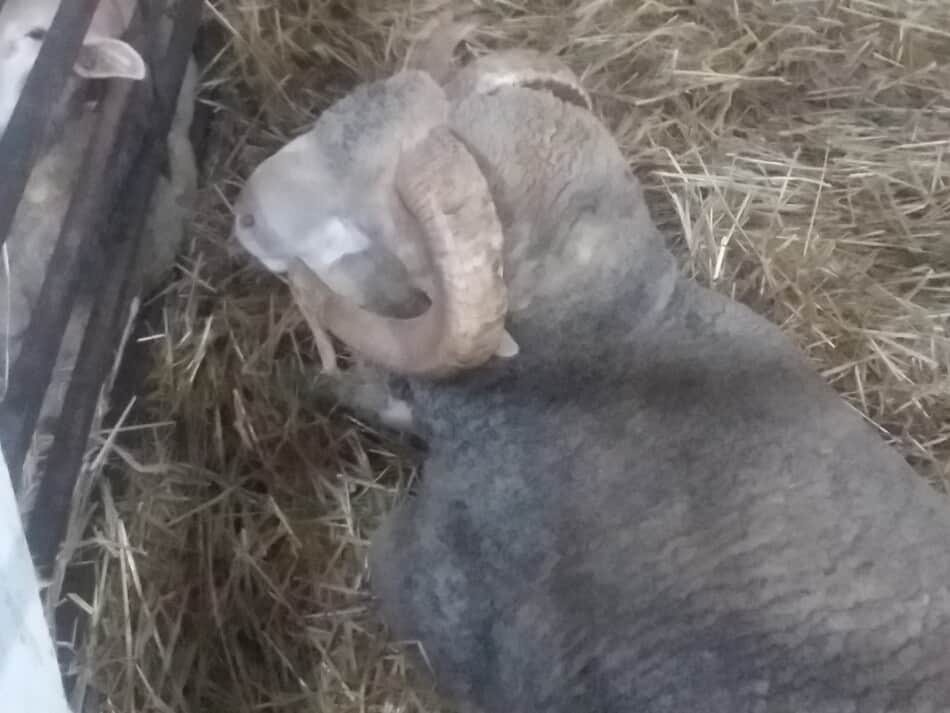
You’ve seen the pictures, rams with big, beautiful curling horns. Wow are they are sight! But do domestic sheep, the kind of sheep raised by farmers and ranchers, have horns? And if they don’t what do you call hornless sheep?
Domestic sheep can have horns, but not all breeds do. Sheep breeds like Scottish Blackface and Horned Dorset have horns, in both male and females. Many breeds of sheep do not have horns, even as adults. Examples of sheep breeds that are polled (without horns) are Polypay and Suffolk.
11 Breeds Of Sheep With Black Faces goes over a few of the common and not so common sheep with black, not white, faces.
Some breeds of sheep have horns, others do not
Whether or not a sheep has horns is based on genetics, which means that some breeds of sheep have horns and others do not. If both parents have horns, the lambs will also develop horns.
Breeds like Jacob Sheep, Horned Dorset and Scottish Blackface are just a few examples of domestic sheep that have horns. Both rams and ewes of these breeds will have horns.
Breeds like Polypay, Cheviot and Suffolk, to name just a few breeds, do not have horns. Neither the ram or the ewes in these breeds will have horns, even as mature adults these breeds will not grow horns.
Where Do Sheep Sleep At Night? gives you a look at where sheep hang out at night.
Horns on sheep can curl or grow upwards from the skull
The shape of the horns on your sheep, generally either sweeping back from the face to curl around or growing up (not curled), are determined by the genetics of the breed.
The basic shape of the horns will be the same for both rams and ewes of the same breed, with the horns in females being smaller, even if both the ram and the ewe are the same age.

Horns or lack of horns (called polled) is genetic
Having horns or not having horns, which is called polled, is genetic. This is just one of many characteristics that lambs get from their parents, just like wool texture, body shape, height and color.
If you look at the chart above, you’ll see that horned sheep have HH as their genes for horns. HH is the required genetics for growing horns. All other combinations will be a sheep that does not grow horns.
Hh where one parent is horned and one parent is polled (hh or Hh, no horns) will always show as polled. Even though these Hh sheep are actually half polled and half horned, you will see polled every time.
Horned sheep will always have horns when they are mature. Horns start to grow when the lambs are a few weeks old and get to a noticeable size by the time the sheep is one year old.
Older sheep, like breeding stock animals, will have longer more substantial horns simply because their horns have had a longer time to grow and develop.
Ewes can have horns
Ewes can have horns, as well. As long as the ewe gets the gene for being horned from both parents as shown above in the 100% horned section, she will be horned.
Lambs can have horns
Lambs can have horns as long as it got the horned gene from both parents. The horns will start to grow after the lamb is born, starting from slightly raised bumps on the skull called “horn buds”.
Horns on female lambs will be smaller than the horns on a ram lamb of the same age.
Rams will have bigger horns than ewes
Rams will have bigger horns that ewes, even if the ram and the ewe are the same age and the same breed of sheep.
Interestingly enough, horns or no horns sheep in general will head butt each other. Horned rams will head butt other rams, whether the other rams have horns or not.
It’s not so much the size of the horns that matters here, it’s more the size of the sheep and the amount of body weight behind the whap.
While we’re talking about head butting, ewes will head butt each other, too! Head butting seems to rev up as it gets closer to breeding season, with both ewes and rams doing a bit of head butting on their pals!
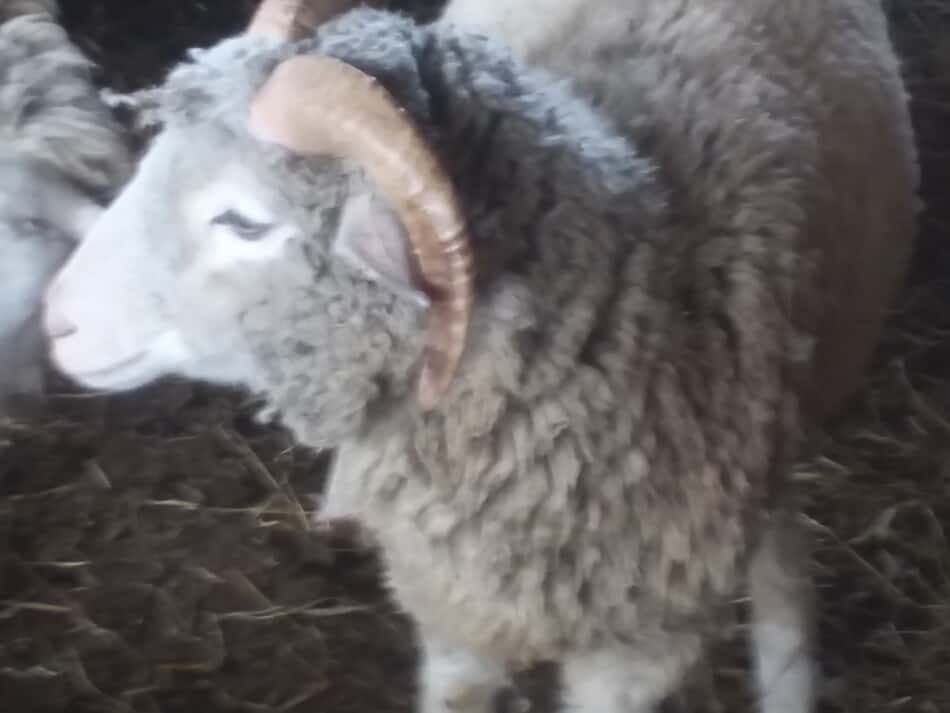
Horns start growing when lambs are small
Sheep that will have horns develop as they grow are born looking like they will not grow any horns, at all! But they will, the horns just start growing once the lambs start growing.
Keep an eye on those lambs and check back with them in a few months, you’ll be able to see little horns starting to peek through at the tops of their head.
Once the lambs are a year old or so, for the ram lambs, at least, the horns will have made a half circle and are starting to curl around.
At about a year of age, the ram lambs we have that are horned have a half moon shape to their horns. The full ram horn look, where the horns are curled around, take a few years to develop.
Bigger horns means older ram
A ram with horns that are beautifully curled around is a ram with some age to him. We had an older horned Dorset type ram that had beautifully curved horns, but it took him quite a few years to grow them!
He was one on my father in law’s favorite sheep, so the ram stayed here until he died last winter. It’s sad to not have the ram anymore, he was truly a looker!
We have kept back a few of his sons as breeding rams, there are two in the yearling (almost two year old) ram group now, actually, and kept his skull with those super impressive horns!
Horns on sheep have some positives aspects
Having sheep with horns can be a positive thing, for both the sheep and the shepherd. I like being able to grab the horns to hold the sheep, especially if they have just been shorn and there’s little to no wool to grab.
Horns also sheep to go with tough, hardy sheep that can do quite a bit for themselves. Obviously, this is not the case across all sheep, but as a general idea, horned breeds seem to be on the more hardy side of the sheep world.
Horns on sheep have some negative aspects
There are, of course, a few negatives to having sheep with horns, at least from a shepherding perspective.
Horned sheep can get stuck in the fence, especially if you have woven wire. We have a few soon to be two year old rams with horns that if there are ewes on the other side of the fence, we have to keep an eye out.
More than once, we have had to walk out and get the ram’s head out of the fence because he pushed through to sniff at ewes but then the edge of the horns caught and he was stuck.
It’s not hard to get him out, but he doesn’t like it and, if it’s a hot day, he could overheat, even if he’s stuck for a short time.
Horned sheep may not fit well through your working set up.
When that big horned Dorset was still around, he had a heck of a time going through the working chute since the horns on his head were so wide. He made it by turning his head sideways, at a 45 degree angle, but he didn’t like it!
As far as the horns themselves. Believe it or not, the inside ridge of the horns kind of has a sharp edge to it, it’s almost like a little almost pointy ridge. I notice this on rams once the horns are pretty noticeable in their first year.
So, what does this have to do with anything? Easy, when I grab the horns, for instance to hold the sheep while my husband gives dewormer, the little ridge can cut. Nothing terrible, but it was definitely a surprise when it happened!
Sheep 101 has a nice article on horns, if you are looking for a few more pictures of sheep of a few different breeds that have horns.
